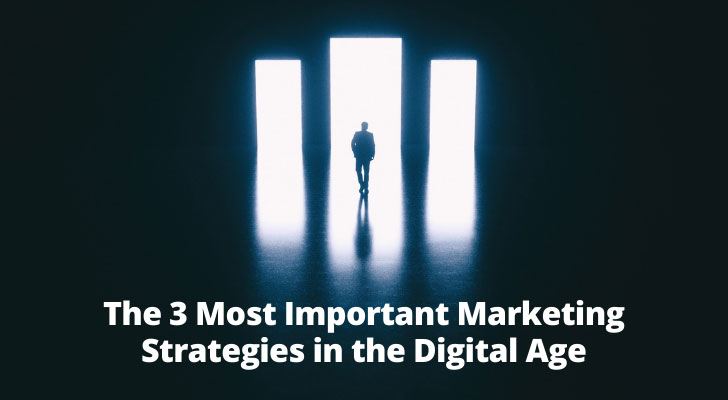You probably agree that anyone who mentions the phrase "digital age" is embarrassing themselves. Other embarrassing phrases include "technology is evolving fast" and "the power of the internet", So if you are new to marketing in general, don't hype up those tech-related words, you'll make the majority of users violently sick.
And you've probably heard folks go on and on about SEO and content marketing, email marketing, and social media marketing as the top strategies, right? I think it's fair to say we're all sick and tired of those same old tunes. Millions have already been there, done that, talked about it, left little room for surprise. The online marketing scene is just saturated with the same advice, hugely making it all seem worn out.

#1 Very Important: Reverse Psychology Marketing
So, you've heard about reverse psychology marketing, right? It's a clever tactic where you sort of tell your customers the opposite of what you want them to do. The idea is that by doing so, you're sparking their curiosity or rebellious side, which makes them more likely to do what you actually want. I think it's a fun and unique approach, isn't it?
- Example Time: If you've ever seen a sign that says, "Don't push the button," and you instantly wanted to push it, you've experienced the lure of reverse psychology.
- Why It Works: It's all about human nature. We don't like being told what to do, right? So, when a brand tells us not to buy their product, it makes us wonder why and often leads us to check it out.
Reverse Psychology Online Examples
- "You probably won't click this mystery link."
- "We bet you're too smart to fall for this deal."
- "This product isn't for everyone, especially not risk-takers."
- "You wouldn't want to try our new flavor, it's too unique."
- "Only a few can handle the power of this software. Are you one of them?"
- "This book might be too advanced for you."
- "Don't watch this video, it's only for the curious."
- "You're likely too busy to check out this life-changing app."
- "Our newest gadget? You probably wouldn't understand it."
- "This secret sale isn't for just anyone. You're not interested, right?"
What You Should Do
Diving into reverse psychology marketing requires a bit of finesse. You don't want to come off as insincere or confusing. Here are some steps to consider:
- Know Your Customers: Understanding who you're talking to is huge. You need to know their sense of humor and boundaries to make sure your message lands well.
- Be Clear, Not Misleading: Make sure your message is playful, not deceitful. You want to pique interest, not frustrate.

"Don't believe anything that's said in this page!"
Steps to Take
Implementing reverse psychology in your marketing strategy can be hugely rewarding, but where do you start? Let's break it down:
Step 1: Craft Your Message:
- Keep it light. A message that feels like an inside joke between you and your customers can work wonders.
- Use the "don't" wisely. Saying "Don't click here" on an ad might make people wonder why, leading them to click out of curiosity.
Step 2: Choose the Right Channel:
- Social media is a fantastic platform for this kind of marketing. It's informal and interactive, you see?
- Email can also be effective, especially with subject lines like "You probably shouldn't open this email."
Step 3: Monitor and Adapt:
- Keep an eye on how your audience responds. Not every attempt will be a home run, and that's okay.
- Be ready to adjust your approach based on feedback. If something isn't working, try a new angle or message.
By following these steps and keeping your messaging playful, you can successfully integrate reverse psychology into your marketing efforts. Just remember, the goal is to create a connection and spark interest, not to trick or mislead. With the right approach, reverse psychology can be a powerful tool in your marketing arsenal.
#2 Insanely Important: Product Cameos in Videos
Product cameos in videos, you've seen them, right? They're those moments when a product appears in a video, but it's not the main focus. Instead, it's there in the background, or used by someone in a way that feels natural and not too "in your face." It's a cool way to show off a product without making a big deal about it. I think it's a smart way to catch interest without being too pushy, isn't it?
- Subtlety is Key: The product is there, but it's not screaming for attention.
- Natural Integration: It fits into the video like it belongs there, which is hugely important for it to feel genuine.
Product Cameos in Videos Examples
- A popular YouTuber casually drinking a branded soda during a vlog.
- A smartphone brand appearing in a music video, used by the artist.
- A fashion influencer wearing a specific watch brand in a tutorial video.
- A video game streamer using a branded gaming chair without explicitly mentioning it.
- A cooking show featuring a specific brand of cookware in the background.
- A travel vlogger driving a branded car on their road trip series.
- A fitness trainer wearing branded workout gear in their exercise videos.
- A tech review video subtly showcasing a brand's laptop in the background.
- A branded coffee mug sitting on the desk during a podcast recording.
- An adventure blogger using a specific camera strap while photographing landscapes.
What You Should Do
When thinking about getting your product into a video, there are a couple of things to keep in mind to make sure it feels just right. You don't want your product to stick out like a sore thumb, but you also want people to notice it, right?
- Understand the Content: Make sure your product fits naturally with the video's theme and tone.
- Focus on Relevance: Your product should make sense in the scene. It shouldn't feel forced or out of place.
CyberCash Wonderland

"Honey, your product is making a cameo appearance on TikTok! Someone was talking about 'Email Marketing 101'! Isn't that the title of your book? Oh my god, does it mean you're going to be a millionaire? I'm so proud of you! What? That's not your book? Just a blog title? Is it a good thing or bad thing?"
Steps to Take
So, you're ready to give this a shot? Here are some steps to help get your product into videos without making it feel like a traditional ad:
Step 1: Identify Suitable Content Creators or Videos:
- Look for videos or creators whose style and viewers align with your product. This makes the cameo feel more natural.
- Consider genres or themes that fit well with your product. For example, tech gadgets might work well in tech review videos, you see?
Step 2: Reach Out and Collaborate:
- Contact creators with a friendly, personalized message. Share why you think a partnership could be mutually beneficial.
- Be open to creative ways your product can be integrated into their content. Creators know their audience best, after all.
Step 3: Plan the Cameo:
- Work with the creator to find a natural way to include your product in their video. It shouldn't disrupt the flow of their content.
- Decide whether the product will be actively used or just appear in the background. Both approaches can be effective, depending on the context.
Step 4: Promote the Video:
- Once the video is live, share it on your social media channels and other marketing platforms to increase its reach.
- Encouraging the content creator to share the video on their channels as well can help maximize visibility.
#3 So Important It's Scary: Random Acts of Love Campaigns

Random Acts of Love campaigns online are all about spreading positivity and kindness through unexpected gestures. These campaigns usually involve doing something nice for someone else, without looking for anything in return. The beauty of these acts is that they can be big or small, but the impact they have is often huge. It's all about making someone's day a little brighter, isn't it? And when these moments are shared online, they can inspire others to spread love in their own ways.
- Spontaneous Kindness: These acts are unplanned and genuine, making them feel more heartfelt.
- Viral Potential: When shared online, these acts can inspire a chain reaction of kindness.
Random Acts of Love Campaign Online Examples
- A brand donating a pair of shoes for every purchase made to those in need.
- Sharing customer stories of kindness on social media with a branded hashtag.
- Hosting a free webinar on mental wellness with expert speakers.
- Sending surprise gift cards to loyal customers with a note of appreciation.
- Partnering with a charity and matching donations for a day.
- Offering a free service day to help the community, like free car washes.
- Planting a tree for every product sold for a month.
- Organizing a virtual event and donating the proceeds to a cause.
- Sending handwritten thank-you notes to customers with their orders.
- Creating a challenge that encourages followers to perform and share their acts of kindness using the brand's product or service.
What You Should Do
If you're thinking about starting a Random Acts of Love campaign for your brand, there are a few things you should keep in mind to make sure your campaign is received well and truly makes a positive impact. It's all about authenticity, right?
- Be Genuine: The act should come from a place of wanting to spread joy, not just for publicity.
- Consider Privacy: Always think about people's comfort and privacy before sharing anything online.
Steps to Take
Ready to spread some love online? Here's how you can start a Random Acts of Love campaign that resonates with people and encourages them to join in:
Step 1: Plan Your Acts:
- Think about what kind of acts of love would resonate with your brand and audience. These should be simple, doable, and meaningful.
- Decide whether you'll perform these acts yourself or encourage your community to participate.
Step 2: Document and Share:
- Capture these acts in a way that feels natural and respectful to the recipients. Photos, videos, or even written stories can work.
- Share these moments on your social media platforms with a dedicated hashtag to track the campaign's spread.
Step 3: Encourage Participation:
- Invite your followers to perform their own Random Acts of Love and share their stories using your campaign's hashtag. This can hugely increase the campaign's reach and impact.
- Offer ideas or suggestions for acts of kindness to help get the ball rolling.
Step 4: Highlight and Celebrate Contributions:
- Regularly feature stories or posts from your community taking part in the campaign. This not only amplifies the positive messages but also encourages more people to join in.
- Acknowledge the creativity and thoughtfulness of the contributions to foster a supportive and loving online community.
By following these steps and keeping the focus on genuine acts of kindness, you can create a successful Random Acts of Love campaign that not only promotes your brand in a positive light but also contributes to a better, kinder online environment. Remember, the goal is to inspire and spread love, creating a ripple effect of positivity across your online community and beyond.
What Do You Advocate?
